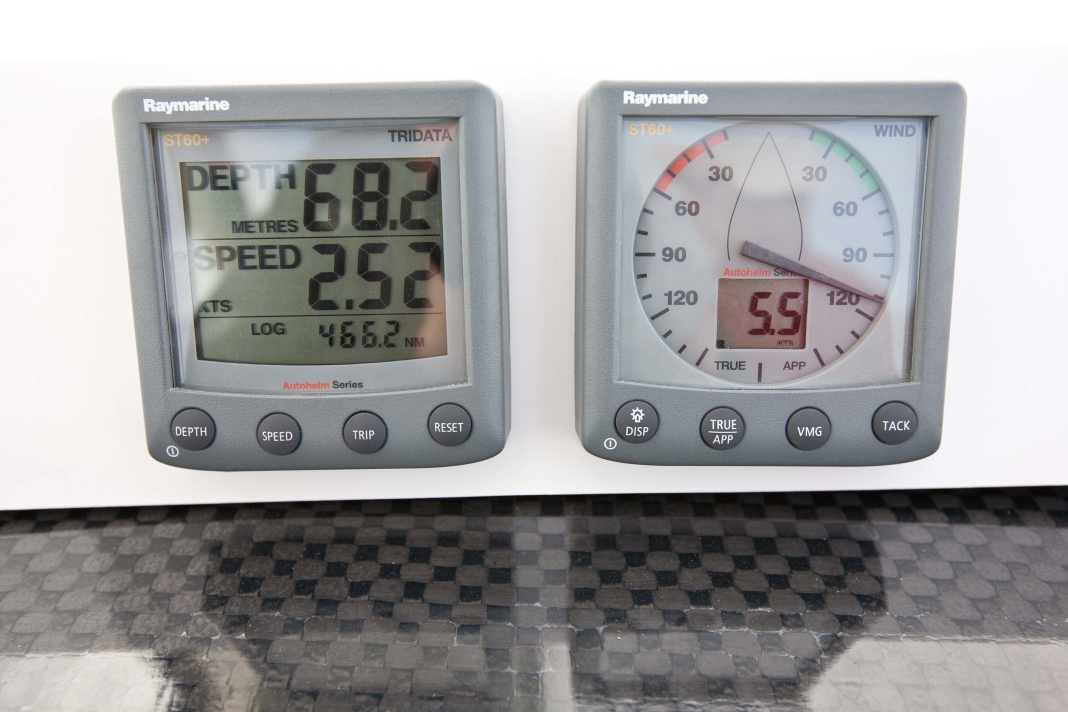





The article series
With an echo sounder, it's all about the installation depth of the transducer, which is relevant in shallow water. Whether the water depth is 15 or 17 metres further out doesn't really matter. Depending on the size of the boat and the shape of the hull, the transducer can be up to one metre below the water surface and show correspondingly distorted values. You also have to decide whether the display should match the chart or provide the distance between the lower edge of the keel and the bottom.
Choose the right depth
Depth under transducer, under keel or the chart depth? With digital echo sounders, this can be set using the value for the so-called offset. If you enter the difference between the transducer and the waterline, the chart depth is displayed. If you select the measurement to the lower edge of the keel instead, the display shows the water remaining under the fin.
Determine the correct dimensions
The easiest way to determine the corresponding dimensions is in winter storage - simply use a folding rule.
If the value is to be checked in the water, the hand plumb line must be used. But be careful: if the bottom under the ship is not level, errors can quickly creep in. That's why you should always sound as close to the transducer as possible.
Another source of error lies in the measurement method itself. Depending on the nature of the seabed, the sound signal penetrates differently and is reflected differently - an effect that can be observed very well with fishfinders. Experienced users can recognise relatively reliably from their display whether the bottom consists of silt, sand or seagrass. However, the electronics must decide on a value for the depth display as a numerical value. Depending on how well the signal evaluation is programmed, the accuracy changes with the ground conditions. For this reason, no manufacturer specifies how many centimetres the depth sounder measures accurately.
Predictive echo sounders
An extension to the conventional echo sounder, which only displays the current depth under the boat, are forward-looking echo sounders. These indicate a shallow area before you run aground - what sailor wouldn't want that? A pioneer in this field is the British company Echopilot. With the Forward Scan, the instrument manufacturer B&G, which is part of the Navico Group, launched a new similar sonar system onto the market. The echo sounder is designed to detect an area equivalent to eight times the water depth and thus offer real-time prediction. At Garmin, the predictive echo sounder is called Pannoptics. It is actually designed as a fishfinder. You can even choose which direction you want to look in.
Disadvantage: All these systems require special transducers that protrude from the hull. Special care must be taken here, especially with crane harnesses, or the transducers are only used in the water.
Echo sounder as anchor alarm
With modern echo sounders, alarm zones can also be defined. This allows a minimum water depth to be set. If the depth falls below this, an alarm sounds. A maximum water depth can also be selected. This function can be used as an anchor alarm. For example, if you anchor on a sloping bottom and the wind shifts overnight, the yacht may drift into an area that is too shallow if no stern anchor is deployed. The echo sounder then issues an alarm if it becomes too shallow.
Conversely, it can help to get an alarm if it gets significantly deeper than indicated on the chart. In this case, the anchor has probably broken free and the yacht has drifted away. This anchor function is described in more detail in our Anchor special explained.

